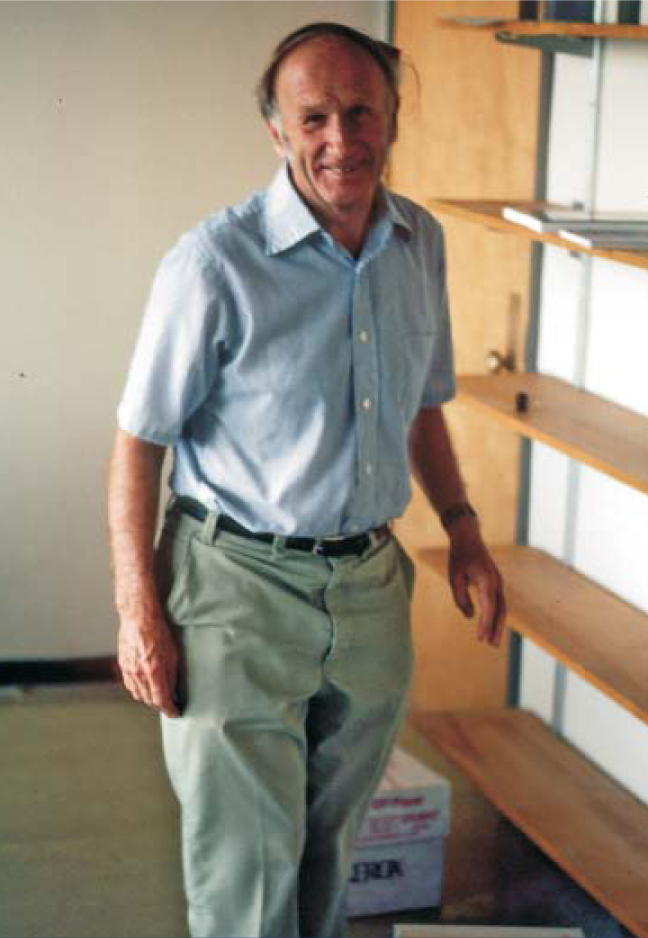Edward Norton Lorenz
DOI: 10.1063/1.2982132
Edward Norton Lorenz, whose research laid the foundation for what many consider the third revolution of 20th-century science—chaos theory—died of cancer on 16 April 2008 in Cambridge, Massachusetts.
Ed was born on 23 May 1917 in West Hartford, Connecticut. Although he was originally trained in mathematics, in which he received his AB from Dartmouth College in 1938 and his master’s degree from Harvard University in 1940, it was his time serving as a weather forecaster in the US Army Air Corps between 1942 and 1946 that determined his future path in science. In 1948 Ed received his doctorate in meteorology from MIT under adviser James Austin, then joined the meteorology department. He occasionally took a leave of absence to work at another institution in the US or Europe. MIT made him an emeritus professor in 1987.
In the mid-1950s Ed led a project in statistical weather forecasting. He rapidly became skeptical that linear statistical methods, then very much in vogue, could be successfully applied to the long-range prediction of such a nonlinear system as weather. Ed’s search for mathematical models that could support his intuition led to the development of highly truncated models of atmospheric variability. One of his early models had 12 variables, but his studies eventually led him to the celebrated three-component model described in his seminal paper published in the Journal of the Atmospheric Sciences in 1963.
The three-component model has, over the years, led to a paradigm shift that has permeated virtually every branch of science. Simply stated, the shift is this: Many biological and physical systems display behavior that is complex or apparently random, but the equations that describe the evolution of those systems are themselves not necessarily either highly complex or random. Instead, the behavior may suggest the fractionally dimensioned geometry of the low-dimensional strange attractor. That extraordinary geometry is not a feature of the Hamiltonian systems studied earlier by Henri Poincaré. Hence, although the notion of chaotic unpredictability had been anticipated by Poincaré many years earlier, Ed was indeed a pioneer in the development of chaos theory.
Chaotic amplification of error is known by the term “butterfly effect.” In fact, the notion that arbitrarily small-scale disturbances can influence large-scale disturbances is a byproduct not of the 1963 paper but of a paper Ed wrote in 1969 describing a spatially extended nonlinear model of the atmosphere. Incidentally, to denote that sensitivity Ed used the metaphor not of a butterfly but of a seagull flapping its wings. In The Essence of Chaos (University of Washington Press, 1993), Ed skillfully described chaos theory for the layperson.
Ed’s work has had an enormous influence in meteorology and climatology. Because flow-dependent predictability is a feature of weather and other nonlinear systems, forecasts of some weather systems will be especially unpredictable. Without an a priori indication of reliability, any weather forecast must be treated with caution. Ed’s work provides a potential methodology to address that problem. Hence, in the 1980s researchers working on numerical weather-prediction systems used supercomputers to make multiple Monte Carlo–like predictions to estimate the predictability of a given flow. Those Monte Carlo simulations forecast the probability distributions of weather, and, as Ed’s work shows, those distributions are predictable even when individual forecast trajectories are not. The Monte Carlo method is also used widely in climate research to express climate change in probabilistic terms and to thereby estimate which regions and variables climatologists can be relatively confident in predicting.
Ed worked in many areas of meteorology. In 1963 he proposed the first credible analysis of the weather-regime vacillation that had been observed both in nature and in the laboratory. He wrote an influential report in 1967 on atmosphere circulation from an energetic perspective and advanced concepts, such as available potential energy. These concepts are still used today, as are some of his 1971 schemes of numerical integration and discretization for predicting weather and climate. His 1987 research on balance conditions for initialization procedures, including the general impossibility that atmospheric flows could be separated into fast and slow components, is important for solving the problem of data assimilation in meteorology and oceanography. In 1998 Ed also worked on determining locations for taking observations in flow-dependent regions of dynamical sensitivity, where they have helped improve forecasts.
For his dynamical work, Ed received numerous honors, including the 1983 Crafoord Prize from the Royal Swedish Academy of Sciences, the Inamori Foundation’s 1991 Kyoto Prize, and the International Meteorological Organization Prize in 2000.
Ed was one of science’s great thinkers, and his friends and colleagues are fortunate to have worked and spent time with him. He was extremely modest and would have been surprised, perhaps even mildly amused, by the tributes that appeared in the media worldwide. I can picture his response to all the eulogies, this one included; he’d dryly remark, “I just don’t see what the fuss is about.”

Edward Norton Lorenz
JAMES W. A. FULLMER

More about the Authors
Tim Palmer. European Centre for Medium-Range, Weather Forecasts, Reading, UK .




